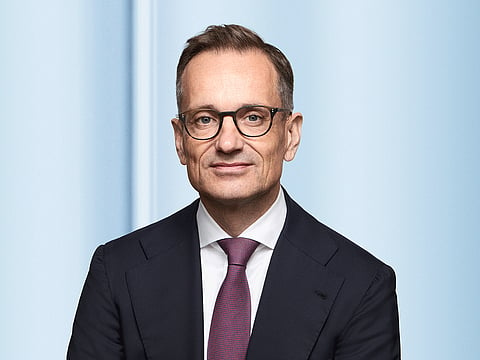Zurich prioritises inflation insight over tariff noise in shifting global cycle
The insurer sees discipline, inflation analysis as key to stability in an uncertain cycle

Dubai: The global multi-line insurer Zurich sees tariff volatility and shifting global trade flows creating a more complex investment environment, but believes inflation, not tariff headlines, remains the core signal shaping portfolio decisions.
Stephan van Vliet, Group Chief Investment Officer at Zurich, said the insurer is looking beyond political rhetoric to understand how tariffs filter through to company behaviour, pricing and supply chains. Rather than reacting to policy announcements, Zurich is analysing where inflation pressures truly sit in the economy.
“It is our job as investors to start with the basics,” he said. “We need to understand inflation, because central banks manage interest rates based on inflation.”
While tariff rates remain historically elevated, Zurich’s takeaway is that the global economy has absorbed much of the disruption through pricing adjustments and supply chain shifts. Companies in some areas have chosen not to pass on cost increases directly to consumers, like Japanese new car imports, while others, such as auto repair parts, have maintained pricing power.
For Van Vliet, this highlights the importance of analysing real-world data rather than relying solely on headline tariff levels. Businesses, he noted, are adapting faster than policy cycles can shift. The result is slower global growth, but resilience supported by technology productivity gains and continued infrastructure investment. That environment calls for discipline.
“Everybody is cautious about reading all of this,” he said. “The official data only tells one part of the story.”
Zurich now blends market data with underwriting insights and internal technology-driven analysis. “You need to complement it with your own business data,” Van Vliet added, emphasising growing links between the investment and insurance units in extracting signals.
Disciplined risk posture
Zurich’s investment positioning continues to reflect its insurance mandate, which is characterised by stability first, compounded returns over time, and resilience across cycles. Around 80% of assets are invested in fixed income, complemented by selective exposure to infrastructure equity, real estate, hedge funds, and private equity.
“We want to be one of the most highly rated stable insurance companies in the world,” Van Vliet said. “It is not necessarily about who makes the highest return, though returns naturally do matter. But it is more about who uses the capital allocated to take investment risks the most effectively.
Private credit remains a focal point, but he stressed that experience matters. “It is really important with private credit that you do your homework and due diligence upfront,” he said, noting that long-term relationships and disciplined origination platforms and the depth of work out teams are essential in a market attracting many new entrants.
Real estate exposure is weighted toward income-producing assets rather than development risk, while equity allocations emphasise diversification across geographies and styles as opposed to concentrated thematic bets.
Zurich's Middle East portfolio
The region, historically a source of outbound capital, is increasingly attracting global inflows, a shift Zurich believes will accelerate. Major strategic deals in the Gulf, deepening infrastructure pipelines and increasing depth in public markets are all reshaping flows.
“Where it used to be that investment would go from the Middle East to the rest of the world, now the reverse flow is also happening,” Van Vliet said. More IPOs, deeper bond markets, and the continued development of Sharia-compliant instruments will, he noted, broaden investment capacity and improve capital formation.
Dubai’s listing cycle and new asset-class development position it well for that transition. Strong migration dynamics and end-of-service reforms are also expanding the long-term savings market.
Long-term savings culture
Zurich’s Middle East strategy centres on digitisation, portability of savings and tailored protection products for a mobile workforce. The insurer has digitised nearly the entire service journey for its unit-linked offerings, allowing customers to manage investments, contributions and withdrawals in real time.
According to Anuja Shah, Head of Strategy and IT for Zurich International Life Ltd, Middle East, the firm has been in the region for nearly 40 years, is proud to stand with its 300,000 customers, has $67 billion in total cover and oversees $7 billion in assets under management and administration regionally, with 98% digital adoption in onboarding.
In the context of underwriting sustainability and how local needs shape Zurich's value proposition, she says, “We are trying to break preconceived notions that you may not be eligible for cover, or that rates would be prohibitively high,” she said, pointing to Zurich’s 97% acceptance rate, including customers with pre-existing conditions, with 80% applications accepted at standard rates.
Regulatory change is supporting that momentum. Open finance frameworks, pension reforms, and rising workforce retention, with tailwinds from the region's GDP growth outpacing the global average, continued infrastructure investment, and initiatives towards achieving National Visions, all favour deeper savings and protection penetration. Yet, awareness remains a gap, with life insurance penetration still low relative to the country's economic scale.
Sign up for the Daily Briefing
Get the latest news and updates straight to your inbox



